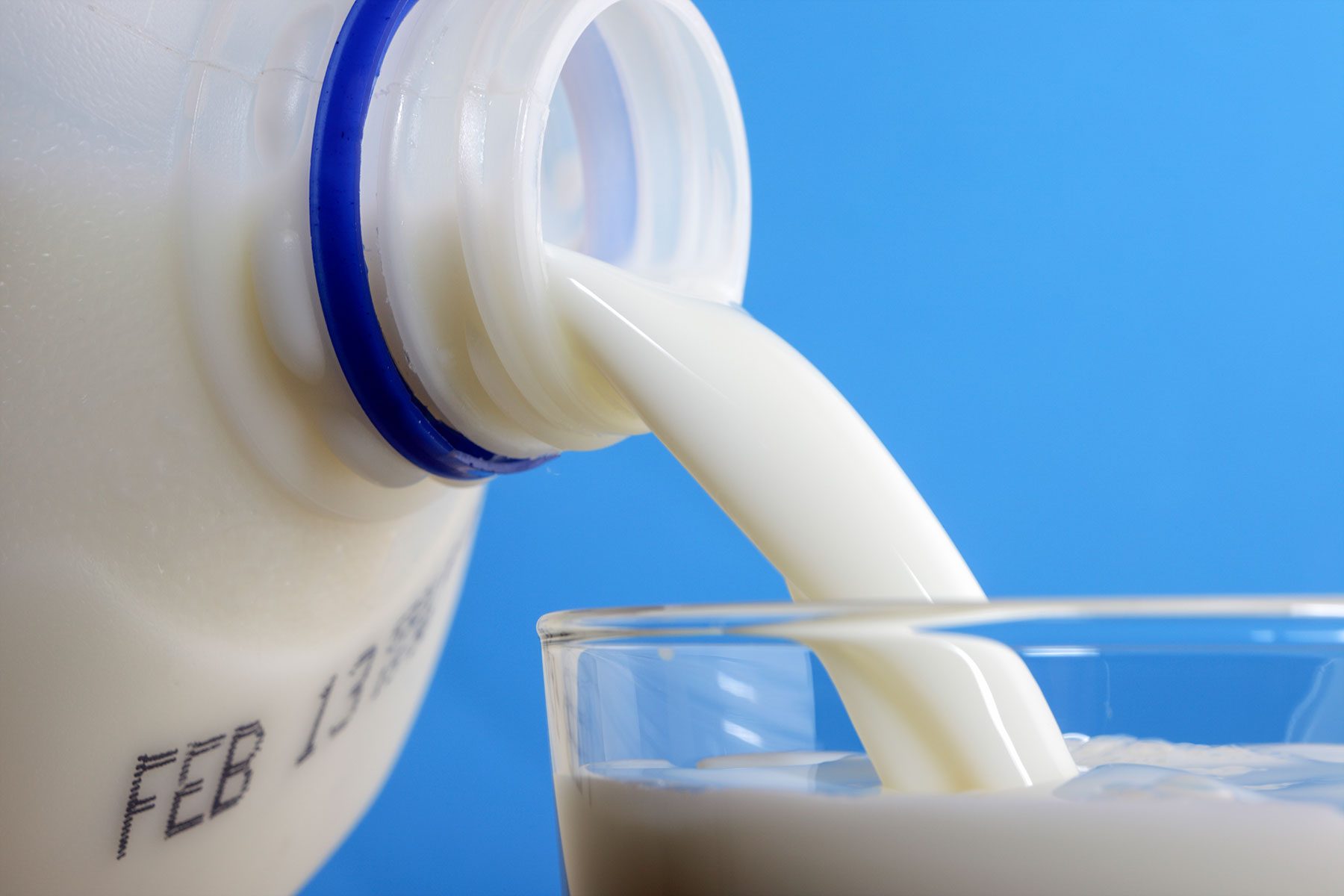The USDA is taking steps to prevent cross-species transmission. Want to stay safe? Here's the kind of milk experts say you should drink.

National Experts: Cow’s Milk Will Now Routinely Be Tested for This Virus

As bird flu works its way across state lines and species barriers, scientists are increasingly concerned that what they’ve called the “highly pathogenic” (contagious) illness could spark another global pandemic. In response, the United States Department of Agriculture (USDA) has announced that it will begin testing bulk raw milk for signs of bird flu contamination in an effort to curb its spread.
Primarily found in birds, avian flu has now also been detected in dairy cows, pigs, cats, mice, and humans. According to an October 29, 2024 update shared by the Centers for Disease Control and Prevention (CDC), 1,195 poultry farms housing over 100 million chickens have been affected in 48 states. Additionally, 387 dairy herds have been affected in 14 states.
Importantly, the CDC has confirmed 36 cases of H5N1 avian flu in humans since April 2024.
It’s said there have been no reported cases of human-to-human transmission to date.
“USDA has been responding, in collaboration with State officials, to HPAI [Highly Pathogenic Avian Influenza] H5N1 detections in U.S. poultry since February 2022,” the health authority explains, adding: “After the first detection of HPAI H5N1 in dairy cattle in March 2024, USDA has worked swiftly and diligently to assess the prevalence of the virus in the U.S. dairy herds and respond accordingly.”
The new testing strategy will see the USDA, CDC, U.S. Food and Drug Administration (FDA), and various other public health officials join forces as they increase surveillance measures. “USDA will implement a tiered strategy to collect milk samples to better assess where H5N1 is present, with the goal to better inform biosecurity and containment measures, as well as to inform state-led efforts to reduce risk to farm workers who may be in contact with animals infected with H5N1,” the USDA explained in an October 30 announcement. “Data collected over the past seven months has shown that H5N1 can be transmitted on equipment, people, or other items that move from farm to farm, including between dairies and poultry facilities.”
The USDA notes that it will also work closely with state and private veterinary groups, “who will play a vital role in carrying out this effort. USDA plans to first sample milk in bulk at the regional level, with additional testing at the farm level if necessary, until herds in an area are determined to be free of the virus.” They report bulk raw milk testing in Colorado has already helped to reduce H5N1 case counts among dairy cows.
Various health authorities are supporting “the rapid development” of vaccine candidates for various animal species, which could help curtail the spread of H5N1 in dairy cows in particular. The FDA has so far approved three H5N1 vaccines for humans. However, there are currently no large-scale plans to distribute or administer those vaccines to the public, reports Scientific American.
Human cases are currently very rare, but that could change as the pathogen continues to evolve. That’s why consumers should also make smart decisions about the dairy products they consume. Besides its capacity for avian flu risk, raw milk is also known to spread other harmful pathogens including E. Coli, Salmonella, Listeria, Campylobacter, and more.
The CDC and USDA note that the the bird flu virus and these other pathogens are inactivated by the process of pasteurization, making pasteurized milk the safest choice.
For daily wellness updates, subscribe to The Healthy by Reader’s Digest newsletter and follow The Healthy on Facebook and Instagram. Keep reading:




















